Discover, View, and Enjoy Tamba Ware at the The Museum of Ceramic Art, Hyogo
Did you know that Tamba-Sasayama in Hyogo is home to the historic Tamba ware, which boasts a history of approximately 800 years? This time, we visit the The Museum of Ceramic Art, Hyogo located in the hometown of Tamba ware, the Tachikui area of Kondacho, and explore the history and charm of Tamba ware.
What is the Tachikui Area of Kondacho, Where Tamba Ware Originated?
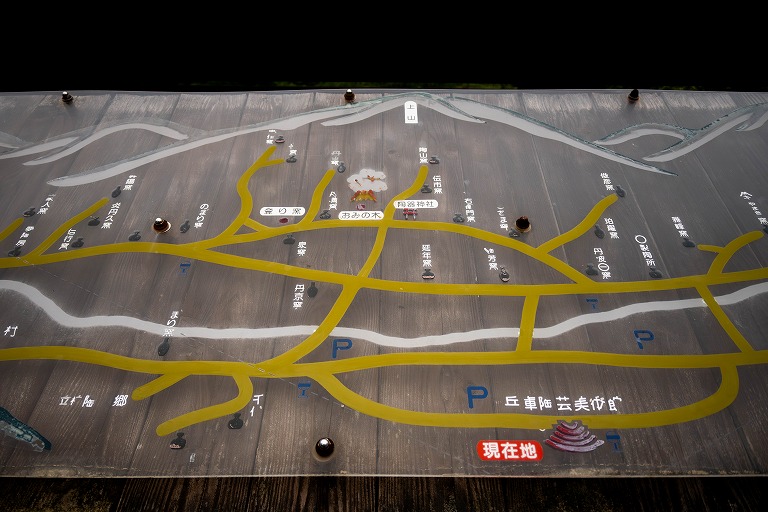
▲The Tamba ware village spreads along the Shitodani River
Tamba ware is said to have originated in the Tachikui area of Kondacho around 800 years ago. Early Tamba ware primarily consisted of essential pottery for daily life, such as jars and urns for storing water and grains, and mortars for cooking. Today, approximately 50 kilns continue to create various utensils that enrich people’s daily life, such as tableware and flower vases.
Japan is home to many traditional pottery regions, but six representative production areas that have continued production from the Middle Ages to the present are called the "Six Ancient Kilns of Japan." Tamba ware is one of these and has been designated as an intangible cultural property of Japan. It is also known as Tachikui ware or Tamba-Tachikui ware, but all refer to the same Tamba ware.
Kondacho is a beautiful town with a serene countryside landscape. The Shitodani River runs through the center of the town, with the The Museum of Ceramic Art, Hyogo to the east and a cluster of kilns to the west. The quiet village, with no large buildings in sight, feels like a step into the countryside, yet it is only about an hour's drive from major cities in the Kansai region such as Osaka, Kyoto, and Kobe, and about two hours by train. The area around Sasayama Castle, a central point for Tamba Sasayama tourism, is about a 20-minute drive away, making it a popular spot for travelers touring by taxi or rental car.
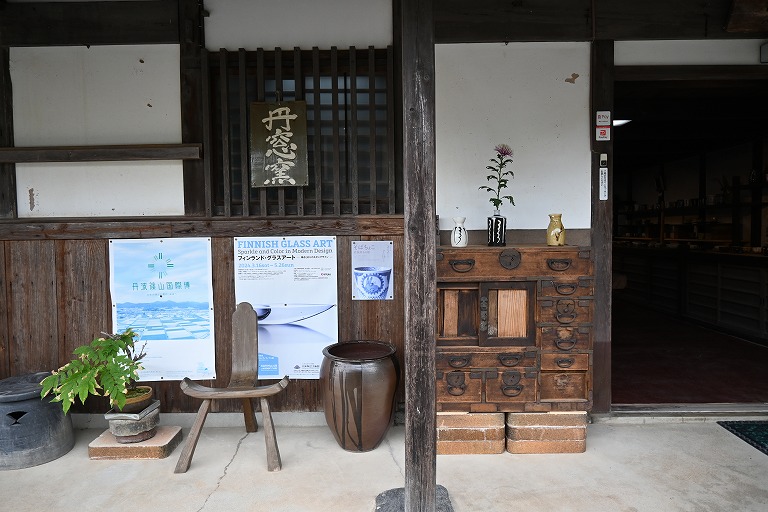
▲Tansou Kiln, One of the iconic Kilns of Tamba Ware
Entering the village, you will find houses with tiled roofs clustered together, with signs bearing the names of the kilns displayed here and there. Many kilns serve as both homes and workshops, and some have galleries where they sell their works. If you are lucky, you might even see craftsmen making pottery or firing it in the kiln.
For more detailed information about the village and the kilns, please refer to the article "Six Ancient Kilns ~ Ceramics Born and Raised in Japan ~."
*Six Ancient Kilns of Japan - A collective term for Echizen ware, Seto ware, Tokoname ware, Shigaraki ware, Tamba ware, and Bizen ware. These have been recognized as Japan Heritage.
(Link:https://www.japan.travel/japan-heritage/popular/a4966b88-09bc-4beb-9d38-d055c65761ec)
*Jar - A traditional Japanese pottery container. It has a round shape with a narrow mouth and a wide base. It is often used for decorative purposes, such as arranging flowers, and for storing tea or sake.
*Urn - A traditional Japanese large pottery container. It has a wide mouth and a generally rounded shape. It is mainly used for storing large quantities of food and drink, and is often used for preparing miso or pickles. It is a practical storage container.
Experience the Rich Nature of Tamba Sasayama at the The Museum of Ceramic Art, Hyogo
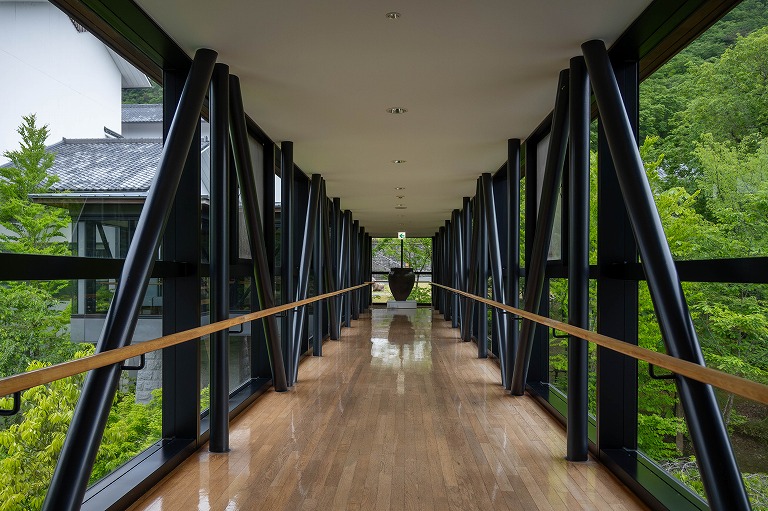
▲The Corridor Leading to the Exhibition Rooms Offers a Panoramic View of the Surrounding Greenery
Today we are introducing the The Museum of Ceramic Art, Hyogo, which opened in 2005. It is situated on a hill overlooking the Shitodani River, surrounded by rich natural scenery including mountains, forests, and fields. The museum buildings, including the exhibition hall, training hall, and tea room, are connected by walking paths, making it feel like you're in the middle of a forest.
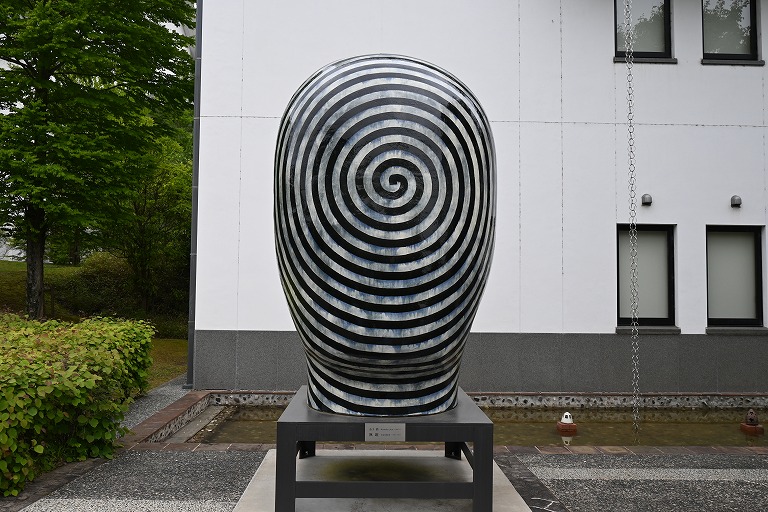
▲Contemporary Ceramic Artist Jun Kaneko's Massive Ceramic Art Piece Welcomes Visitors at the Museum Entrance
If it’s your first time visiting the home of Tamba ware, this museum is a must-see. By viewing the exhibits, you can gain a deep understanding of what Tamba ware is all about.
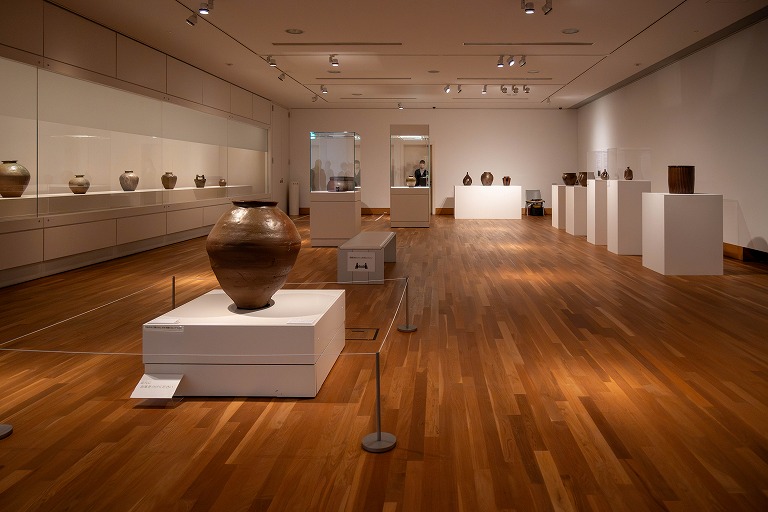
▲Permanent Exhibition Room
The museum currently houses over 3,000 pieces of Tamba ware, with colors, shapes, and uses varying by period. While Tamba ware is often associated with simple jars and urns made from red clay, there is no fixed style for Tamba ware. The term encompasses all ceramics made in Tamba Sasayama.
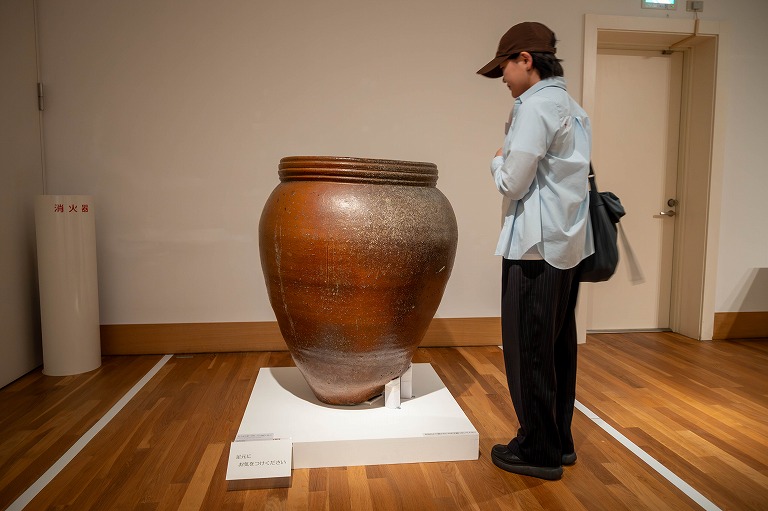
▲A large urn made in the early Edo period (1600s). The surface is covered with iron-rich clay (red clay) to prevent water leakage, giving it a unique reddish-brown hue
The permanent exhibition traces the history of Tamba ware from its early days to the modern era. Tamba ware has always been characterized by its close ties to everyday life. Changes in lifestyle over the ages are well-reflected in the pottery, with more modern pieces like flower vases and flat plates that suit contemporary life becoming more common as you approach the present day.
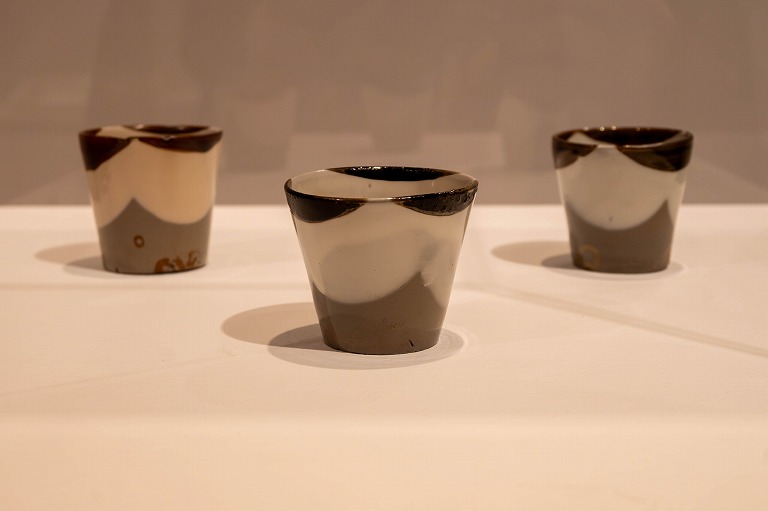
▲An Edo period sake cup* (1800s), designated as an important tangible cultural property of Hyogo Prefecture
There is a reason why Tamba ware has such a rich variety and has adapted its style over time. Unlike many other pottery regions where middlemen would collect works from craftsmen and deliver them to stores, Tamba Sasayama craftsmen often delivered their works directly to shops in cities like Osaka and Kyoto. This direct interaction allowed them to stay attuned to urban trends and create pieces that would delight people.
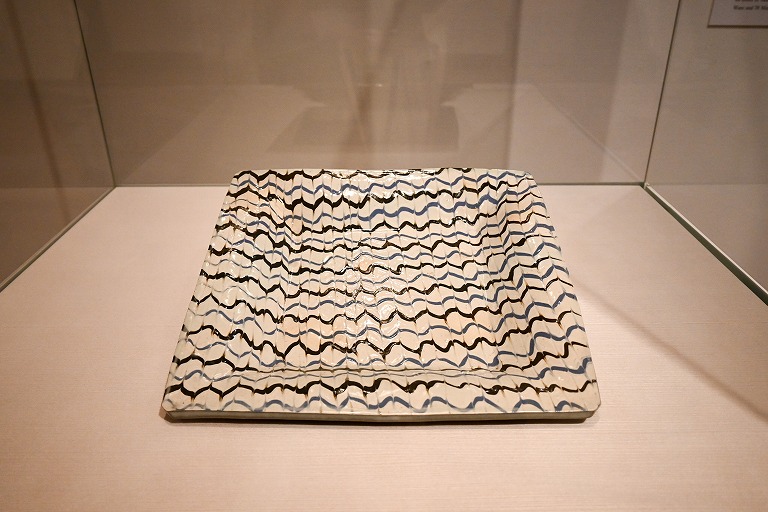
▲A work by Shigeyoshi Ichino of Tanso Kiln, who trained under Bernard Leach, the British potter who led the Mingei Movement. The surface decoration technique is known as slipware
Thanks to its excellent functionality and design, Tamba ware, which has always been closely linked to daily life, began to be recognized for its artistic value by Mingei movement artists like Sori Yanagi* in the 1960s.
Besides the permanent exhibition room, there is also a special exhibition room where various exhibitions are held, featuring ceramics and glass crafts from both Japan and abroad.
*O-choko (Sake Cup): A traditional small Japanese ceramic cup used for drinking sake. It fits in the palm of the hand and is designed to enhance the enjoyment of the sake's flavor.
*Sori Yanagi: A renowned Japanese product designer known for his pursuit of functional and beautiful designs rooted in everyday life. He created numerous products, including kitchenware, furniture, and lighting. His designs are simple yet highly functional and are loved by many. Sori Yanagi was also the eldest son of Soetsu Yanagi, who promoted the Mingei Movement, which reevaluated the beauty and value of traditional Japanese crafts and advocated for handmade crafts used in everyday life.
Explore Tamba Ware and Contemporary Art Along the Museum's Walking Paths
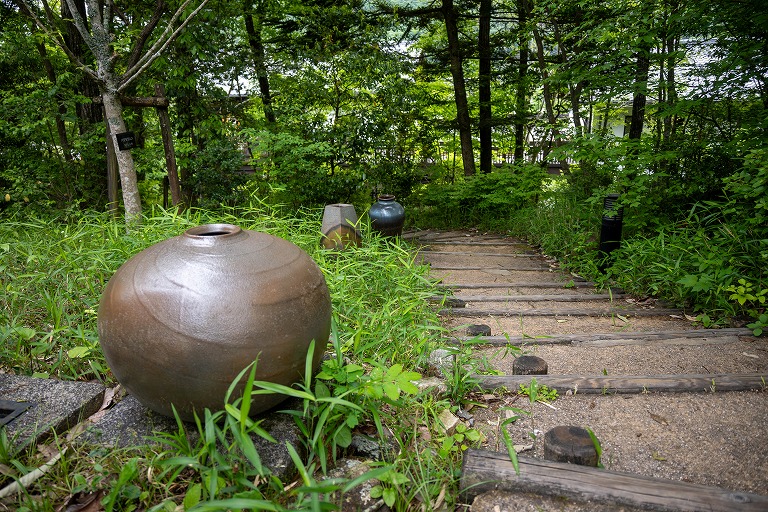
Another exhibition space at the The Museum of Ceramic Art, Hyogo is the outdoor gardens and walking paths. Quietly hidden among the greenery, many Tamba ware pieces are displayed. Most of these were donated by local craftsmen when the museum opened. At first glance, what looks like a large stone might actually be a giant Tamba ware sculpture, and some playful pieces can be found as well!
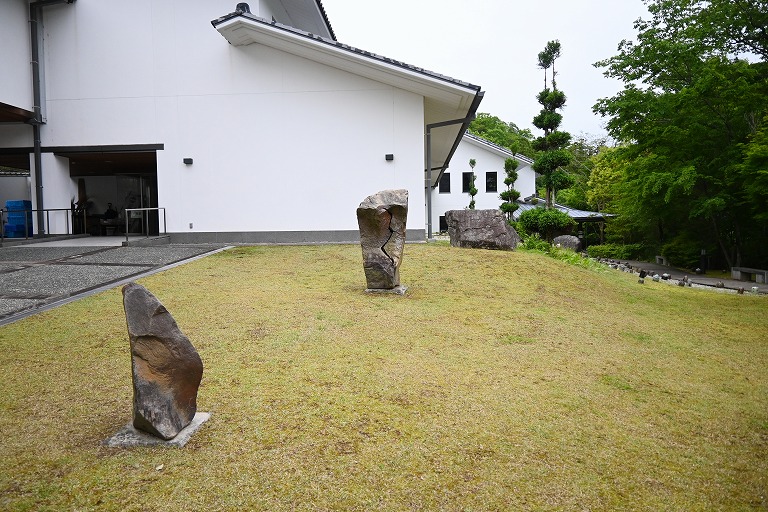
▲The two pieces in the foreground are ceramic artworks by Yasuyoshi Sugiura, which at first glance appear to be massive stones.
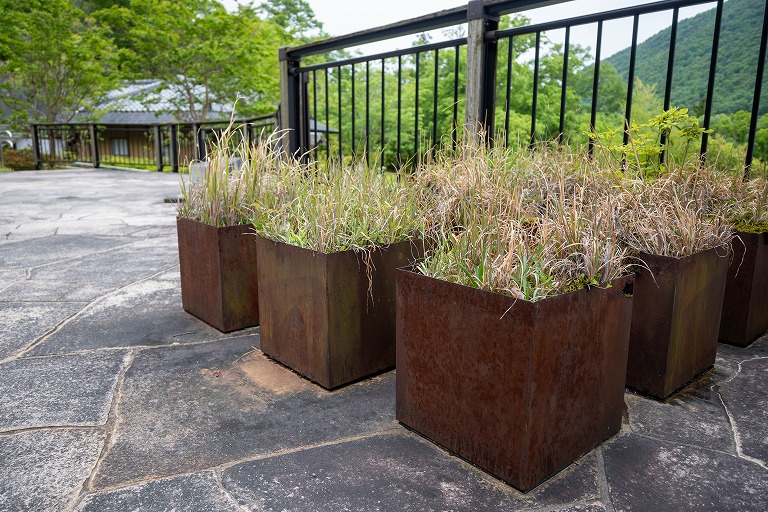
▲This one that looks like a potted plant is also a contemporary art piece.
Every year, the museum hosts the "Artist in Tamba" program, inviting prominent ceramic artists active in Japan and abroad to deepen exchanges with local ceramic artists. Some of the outdoor contemporary art pieces were donated by artists who visited through this program.
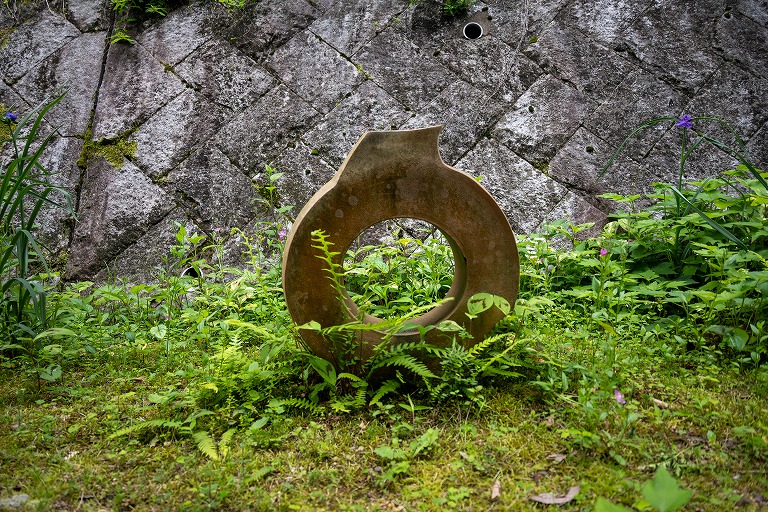
Since the museum was built utilizing the natural terrain of the mountains, the trees and plants here are all native to the area. The flowers that bloom change with the seasons, and in autumn, the trees turn into vibrant colors. Visitors can enjoy the natural beauty of the area along with the Tamba ware and contemporary art pieces.
Don't Just Look, Get Hands-on with Pottery Making and Dining with Tamba Ware
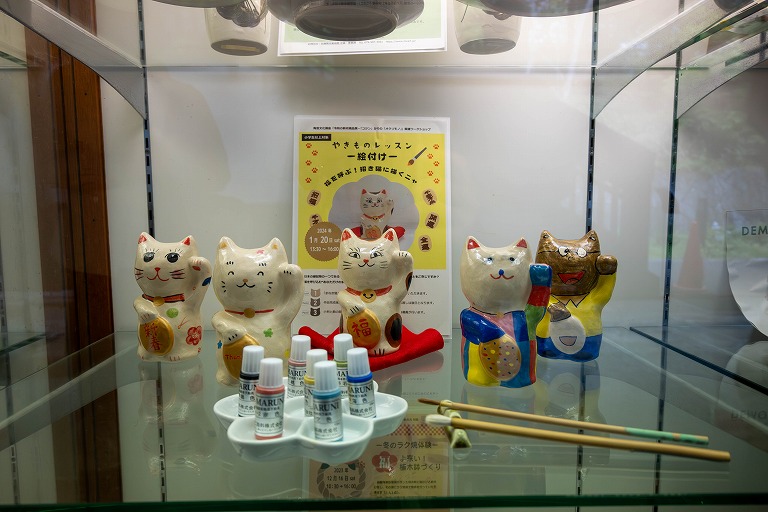
After viewing the exhibits, participating in pottery-making events or workshops is a fun plan. In the entrance hall workshop, under the guidance of craftsmen, you can join sessions where you paint on pottery or try your hand at the potter's wheel. These sessions are held irregularly.
There are courses for beginners as well as more advanced courses for those serious about learning pottery. (Event and workshop schedules are posted on the museum's website: https://en.tanbayaki.com/ )
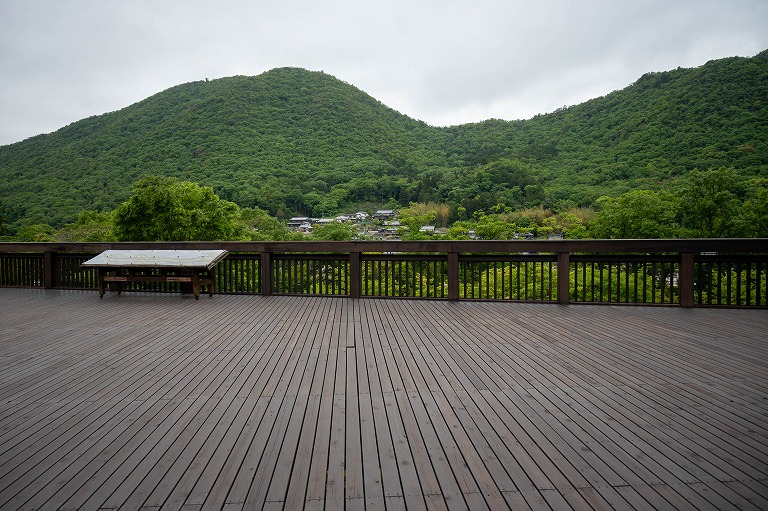
Lastly, let us introduce the best scenic spot at this museum. From the spacious observation deck on the second floor of the entrance hall, you can enjoy a panoramic view of the kilns scattered across the village with Mount Wadenji in the background. The wide sky and lush green mountains spread out before you, inviting you to take a deep breath of the refreshing air.
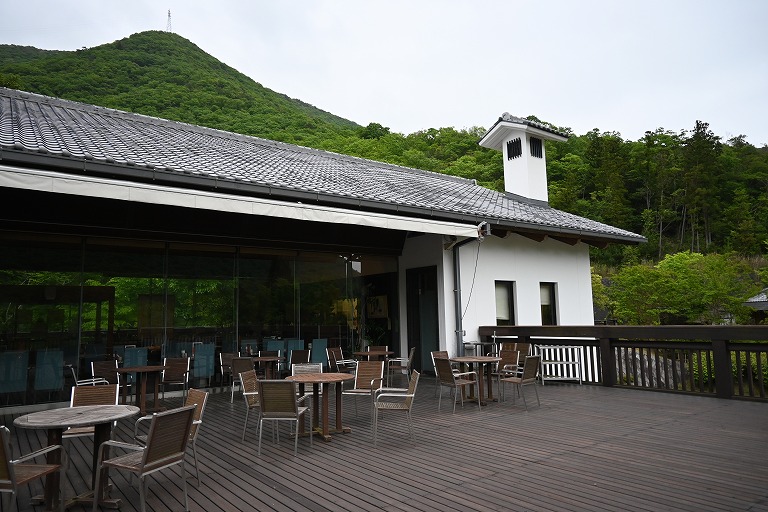
The observation deck is connected to the dining café "Kokuzo," where you can enjoy lunch or coffee while taking in the scenery. The café offers pasta and course menus that feature plenty of ingredients from Tamba Sasayama.
Discover, Learn, and Visit the Home of Tamba Ware
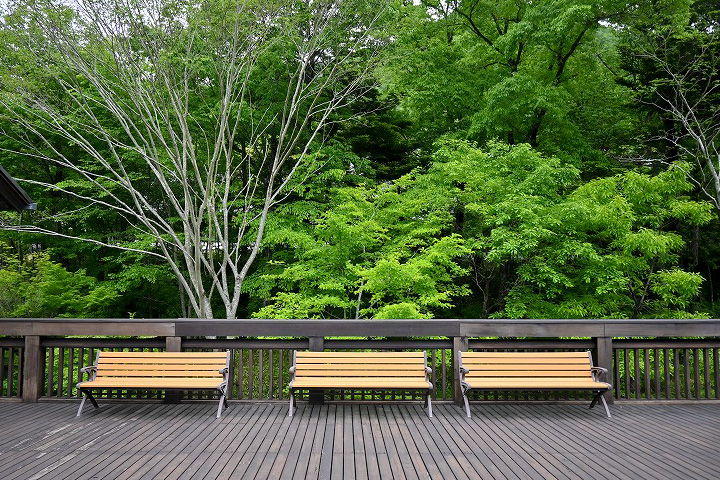
After learning about Tamba ware through the exhibits, visiting the actual kilns will be even more enjoyable.
At the "Tamba Traditional Craft Park: Sue no Sato" adjacent to the museum, you can purchase works from kilns currently active in the Kondacho Tachikui area. Some pieces are similar to those in the museum's collection, while others showcase the unique creativity of the craftsmen, making it well worth a visit. Why not look for your favorite craftsman?
The Museum of Ceramic Art, Hyogo (English site: https://en.tanbayaki.com/)
Address: 〒669-2135 Hyogo, Tamba-Sasayama, Kondacho Kamitachikui, 4
(※Google Maps LinkGoogle Maps link/https://www.google.com/maps/place/%E5%85%B5%E5%BA%AB%E9%99%B6%E8%8A%B8%E7%BE%8E%E8%A1%93%E9%A4%A8/@34.983783,135.13116,15z/data=!4m6!3m5!1s0x60007217d0b60be9:0x283fc0a041daba6c!8m2!3d34.9837829!4d135.1311601!16s%2Fg%2F121lsz60?hl=ja&entry=ttu)
Hours: 10:00 AM – 5:00 PM (Last admission at 4:30 PM)
Closed: Mondays (closed on New Year’s holidays and during maintenance periods)
Parking: Available (free)
Date : 2024.05.31



